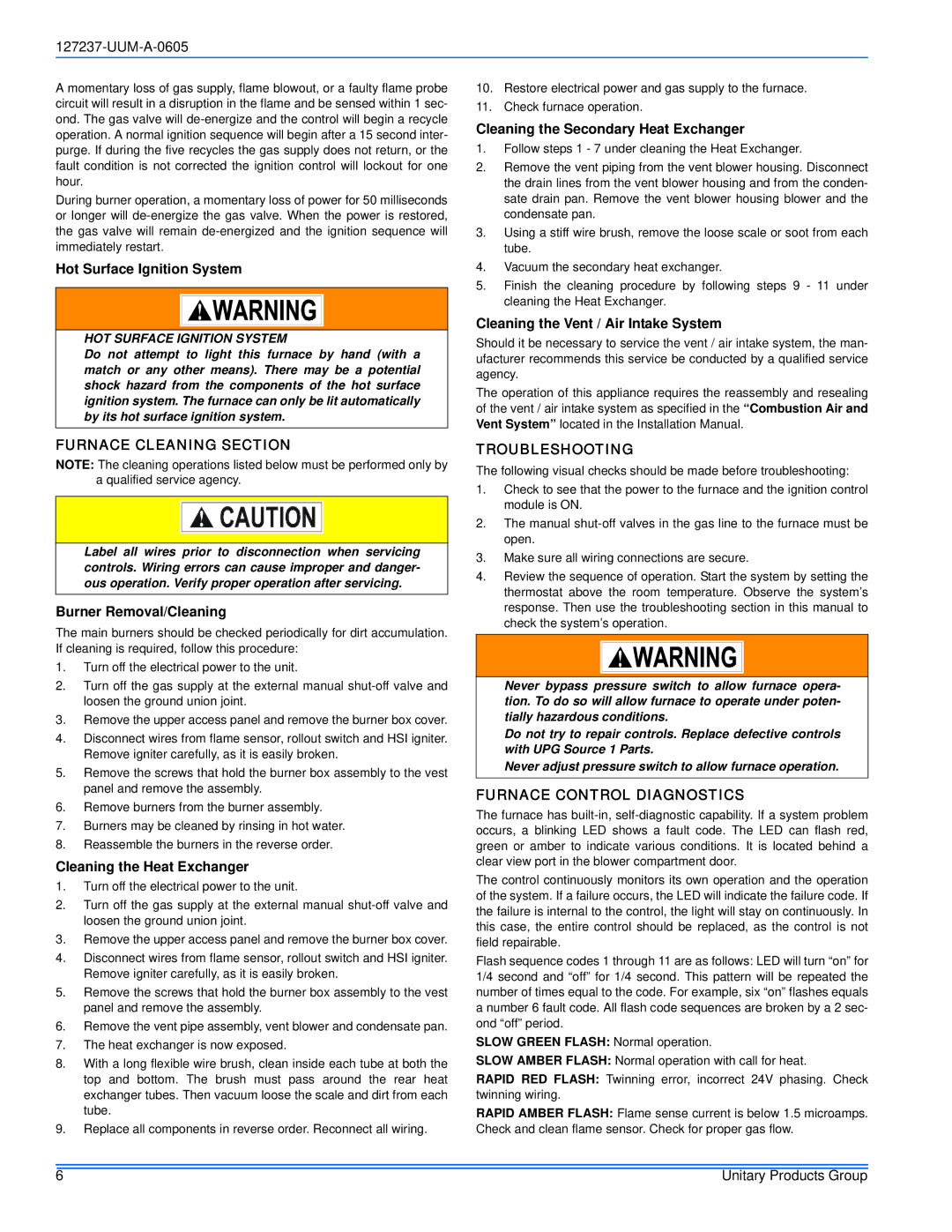FC9S, PS9, FL9S specifications
White Rodgers is a renowned name in the HVAC industry, and their line of gas control units, including the PS9, FC9S, and FL9S models, exemplifies innovation and reliability. These products are designed to offer precise gas control for a wide range of heating applications, making them essential components in modern heating systems.The White Rodgers PS9 is an integrated gas valve that combines multiple functionalities into a single unit. This model features a compact design that allows it to fit into tight spaces while still providing alignment with various burner types. The PS9 incorporates a user-friendly wiring connection system, facilitating easier installation and maintenance. With its adjustable pressure settings, this model can optimize performance in diverse heating scenarios, ensuring users can enjoy efficient and effective temperature control.
The FC9S model enhances user experience with its advanced safety features. It is equipped with a built-in safety switch that cuts off gas supply in the event of a malfunction. Additionally, the FC9S features a self-diagnostic capability, which allows it to detect system faults and provide feedback for more straightforward troubleshooting. This feature not only improves operational safety but also minimizes downtime in heating systems.
The FL9S model stands out for its versatility and adaptability. Designed for a variety of applications, the FL9S works efficiently in both residential and commercial settings. It supports multiple gas types, including natural gas and propane, making it a flexible choice for users with different heating needs. Like its counterparts, the FL9S also features robust construction to withstand varying environmental conditions, ensuring longevity and reliability in heat applications.
Across these models, White Rodgers utilizes high-quality materials and state-of-the-art manufacturing processes. Each unit is subjected to rigorous testing to ensure it meets industry standards for safety and efficiency. Moreover, the incorporation of energy-saving technologies in these gas valves aligns with growing environmental considerations, making them an excellent investment for those looking to enhance their heating systems.
In conclusion, the White Rodgers PS9, FC9S, and FL9S models represent cutting-edge technology in gas control solutions, providing essential features for reliability, safety, and efficiency in heating applications. Whether for residential or commercial use, these units are engineered to meet the demands of modern heating, making them a trusted choice for HVAC professionals and homeowners alike.

